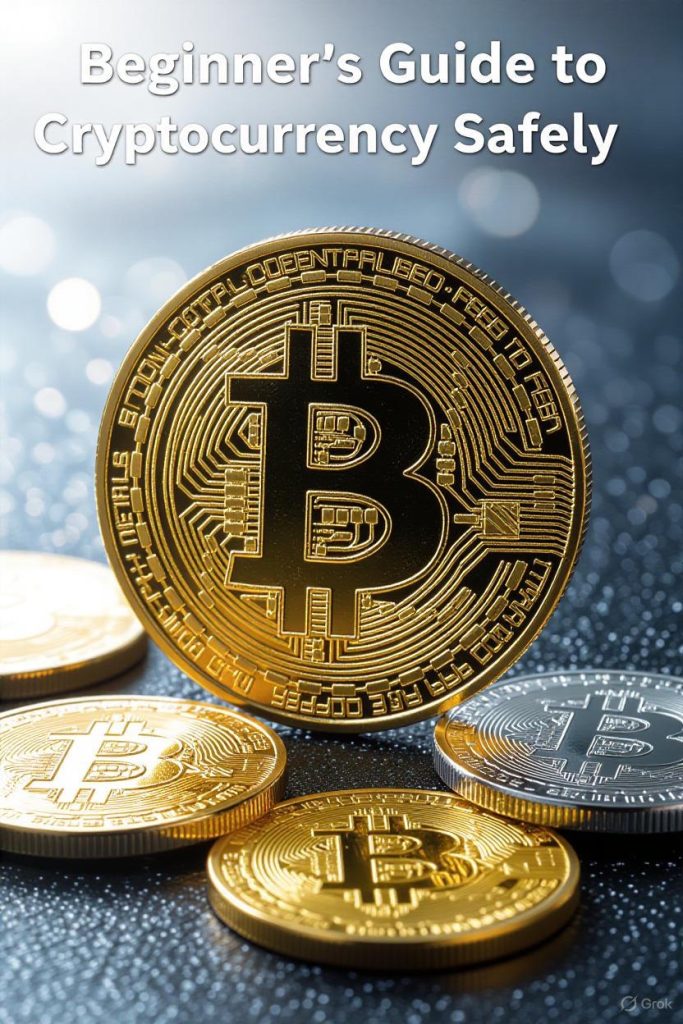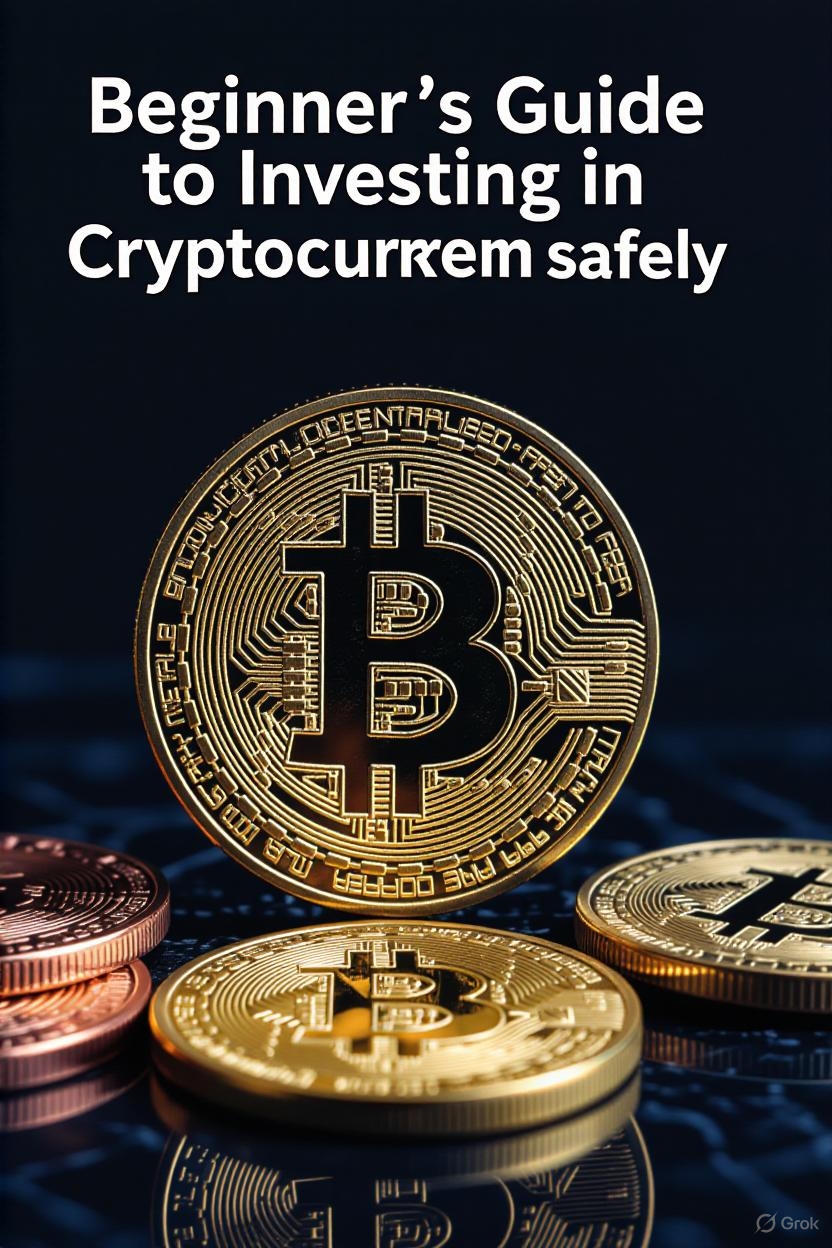So, you’ve finally decided to dip your toes into the wild world of cryptocurrency, huh? Some call it the “digital gold rush,” others think it’s a bubble waiting to pop. Honestly, it’s a mix of both, depending on how you play the game. And that’s what we’re here for today — to make sure you don’t end up broke and crying over a random meme coin.

Why Cryptocurrency Even Matters
Remember when people thought the internet was just a fad? Yep, now you can’t survive without it. Cryptocurrency is kind of on that same path. It’s not just about Bitcoin anymore — we’re talking Ethereum, Solana, Polygon, Cardano, and even those joke coins like Dogecoin that somehow made millionaires overnight. Crazy, right?
At its core, crypto is about decentralization. No banks, no middlemen, just peer-to-peer transactions. Think of it like sending money to a friend, but instead of going through your bank, it’s like slipping cash through the internet — instant, borderless, and secure.
The First Rule of Crypto Club: Safety First
Here’s the thing. Crypto can make you money, but it can also snatch it away faster than you can say “blockchain.” I learned this the hard way when I once stored some coins on an exchange that later got hacked. Let’s just say my wallet felt way lighter overnight. Lesson? Always secure your investments.
So before you buy your first Bitcoin (or Shiba Inu if you’re feeling spicy), here are some golden safety rules:
- Use a trusted exchange – Stick to well-known platforms like Coinbase, Binance, or Kraken.
- Get a hardware wallet – Think of it as your digital safe. Ledger or Trezor are the popular kids in this space.
- Enable 2FA – No excuses. Always double-lock your accounts.
- Don’t share your seed phrase – That 12–24 word magic spell is the key to your treasure. Guard it like your grandma’s secret biryani recipe.
How Much Should You Invest? (Spoiler: Not Your Kidney)
If you’re a beginner, the golden rule is simple: Don’t invest what you can’t afford to lose. Crypto is risky. It’s like riding a rollercoaster blindfolded. Fun? Yes. Predictable? Absolutely not.
Start small. Maybe 5–10% of your investment portfolio, max. That way, if things go south, you won’t be selling your furniture on OLX to make rent.
Picking Your First Coins
This part feels a bit like grocery shopping. You walk in, see hundreds of shiny options, and suddenly you’re overwhelmed. Do you go for the classics like Bitcoin and Ethereum, or do you try something exotic like Chainlink or Avalanche?
Once you get the hang of it, you can explore altcoins — just be ready for higher risks.
Timing the Market (Spoiler: You Can’t)
If I had a dollar for every time someone said “Buy the dip,” I’d probably own a yacht by now. Prices swing more than a politician’s promises.
Instead, try something called Dollar-Cost Averaging (DCA). Basically, you invest a fixed amount every week or month, no matter the price. Over time, it smooths out the crazy ups and downs. Slow and steady wins the race.
Red Flags to Watch Out For
Crypto is amazing, but it’s also the Wild West of finance. Scams are everywhere. If it sounds too good to be true, it probably is. Some red flags:
- Promises of guaranteed returns (no one can guarantee that).
- Random DMs from “crypto experts” on Telegram.
- Meme coins with no real utility.
- Exchanges with shady reputations.
I once got pitched by someone who swore their token was the “next Bitcoin.” Spoiler: It vanished faster than free food at a college fest.
Staying Sane During Market Swings
Imagine waking up, checking your portfolio, and realizing your investment dropped 40% overnight. Welcome to crypto! It’s not for the faint-hearted. The trick? Don’t panic. Crypto is volatile, and patience is your best friend.
Whenever I feel that pit in my stomach after a crash, I remind myself: You haven’t lost until you sell. Long-term thinking is key.
Diversification: Don’t Put All Your Eggs in One Blockchain
Yes, crypto is exciting. But putting every last rupee into it? Bad idea. Mix it up. Keep some money in stocks, maybe a mutual fund or two, and a decent emergency fund. That way, you won’t be forced to sell your coins when the market dips.
Crypto should be part of your financial buffet, not the entire meal.
Crypto Taxes (Yep, Uncle Sam Wants His Cut)
A lot of newbies forget this, but crypto profits are taxable in most countries. Depending on where you live, you might owe taxes on capital gains. So keep track of your buys, sells, and transfers. Trust me, it’s better than explaining to the taxman why your bank account suddenly got fat.
FAQs: Quick Answers for Beginners
1. Is crypto safe for beginners?
It can be, if you stick to trusted exchanges, secure your wallet, and don’t fall for scams.
2. How much money should I start with?
Even ₹500 or $10 is fine to start. The key is learning, not betting the house.
3. Can I lose all my money in crypto?
Yes. Harsh but true. That’s why you should only invest what you can afford to lose.
4. Do I need a hardware wallet right away?
Not necessarily. For small amounts, a trusted exchange wallet works. But for long-term or big investments, hardware wallets are safer.
